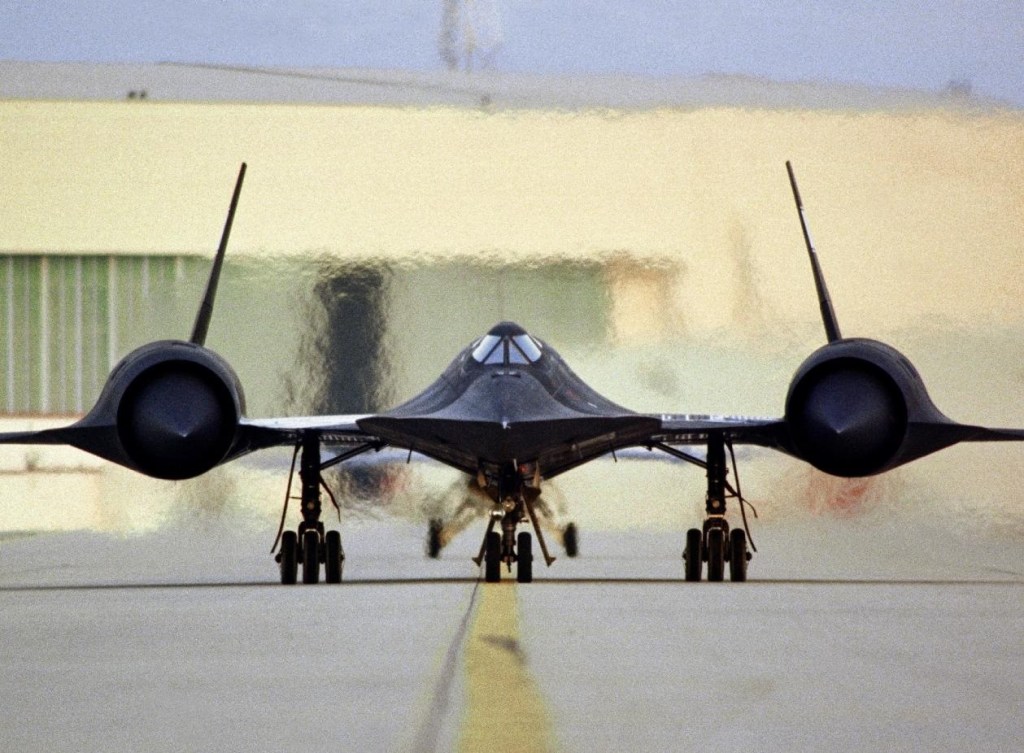Before the advent of stealth aircraft, the U.S. military had a very different approach on how to operate its planes in contested airspace. That approach could be summarized in two words:
Brute force.
In those early years of air defense system development, the U.S. was less interested in developing sneaky aircraft and more concerned with developing untouchable ones — utilizing platforms that leveraged high altitude, high speed, or both to beat out air defenses of all sorts — whether we’re talking surface to air missiles or even air superiority fighters.
Lockheed’s legendary Kelly Johnson, the designer of just about every badass aircraft you can imagine from the C-130 to the U-2 Spy Plane, was the Pentagon’s go-to guy when it came to designing platforms that could evade interception through speed and altitude. His U-2 Spy Plane, designed and built on a shoestring budget and in a span of just a few months, first proved the concept of flying above enemy defenses, but then America needed something that could also outrun anything Russia could throw its way. The result was the Blackbird family of jets, including the operational SR-71 — an aircraft that remains the fastest operational military plane ever to take to the sky.
You could make a list of 1000 amazing facts about the SR-71 without breaking a sweat — but here are three even a few aviation nerds may not have heard before:

The Blackbird had over 4,000 missiles fired at it. None ever hit their target.
The SR-71 Blackbird remained in operational service as a high-speed, high-altitude surveillance platform for 34 years — flying at speeds in excess of Mach 3 at altitudes of around 80,000 feet. This combination of speed and altitude made it all but untouchable to enemy anti-air missiles, so even when a nation knew that there was an SR-71 flying in their airspace, there was next to nothing it could do about it. According to Air Force data collected through pilot reports and other intelligence sources more than 4,000 missiles were fired at the SR-71 during its operational flights, but none ever managed to actually catch the fast-moving platform.

Read Next: Air Force wants a supersonic Air Force One
Its windshield gets so hot it had to be made of quartz
Flying at such high speeds and altitudes puts incredible strain on the aircraft and its occupants, which forced Lockheed to find creative solutions to problems as they arose. One such problem was the immense amount of heat — often higher than 600 degrees Fahrenheit — that the windshield of the SR-71 would experience at top speeds. Designers ultimately decided that using quartz for the windshield was the best way to prevent any blur or window distortion under these conditions, so they ultrasonically fused the quartz to the aircraft’s titanium hull.
The SR-71 was the last major military aircraft to be designed using a ‘slide rule’

There are countless incredible facts about the SR-71 that would warrant a place on this list, but this is one of the few facts that pertain specifically to the incredible people tasked with developing it. Not long after the SR-71 took to the sky, the most difficult mathematical aspects of aircraft design were handed off to computers that could crunch the numbers more quickly and reliably — but that wasn’t the case for the Blackbird. Kelly Johnson and his team used their “slide rules,” which were basically just specialized rulers with a slide that designers could use to aid them in their calculations in designing the mighty Blackbird. Years later, the aircraft was reviewed using modern aviation design computers only to reveal that the machines would not have suggested any changes to the design.
Just for fun, here’s Major Brian Shul’s incredible “Speed Check” story about flying the Blackbird
This article was originally published on November 19, 2019.






